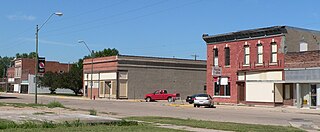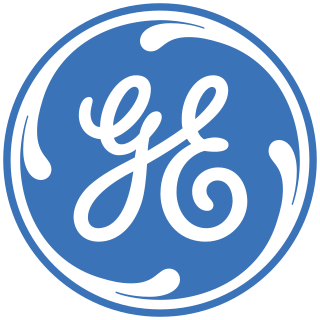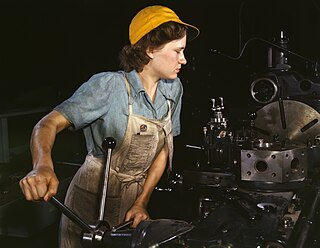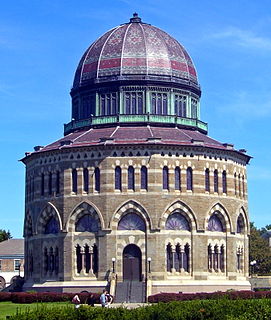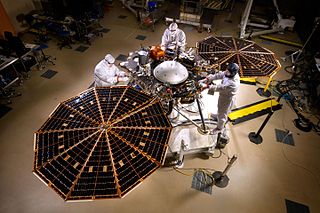
Engineering is the application of knowledge in the form of science, mathematics, and empirical evidence, to the innovation, design, construction, operation and maintenance of structures, machines, materials, software, devices, systems, processes, and organizations. The discipline of engineering encompasses a broad range of more specialized fields of engineering, each with a more specific emphasis on particular areas of applied mathematics, applied science, and types of application. See glossary of engineering.
The RCA Corporation was a major American electronics company, which was founded as the Radio Corporation of America in 1919. It was initially a wholly owned subsidiary of General Electric (GE); however, in 1932, RCA became an independent company after GE was required to divest its ownership as part of the settlement of a government antitrust suit.

A regenerative circuit is an amplifier circuit that employs positive feedback. Some of the output of the amplifying device is applied back to its input so as to add to the input signal, increasing the amplification. One example is the Schmitt trigger, but the most common use of the term is in RF amplifiers, and especially regenerative receivers, to greatly increase the gain of a single amplifier stage.
Feasibility Study is an assessment of the practicality of a proposed project or system.
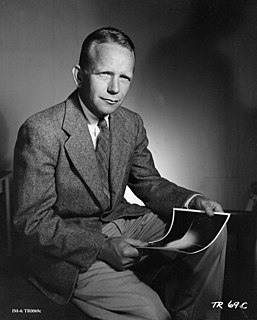
Kenneth Tompkins Bainbridge was an American physicist at Harvard University who did work on cyclotron research. His precise measurements of mass differences between nuclear isotopes allowed him to confirm Albert Einstein's mass-energy equivalence concept. He was the Director of the Manhattan Project's Trinity nuclear test, which took place July 16, 1945. Bainbridge described the Trinity explosion as a "foul and awesome display". He remarked to J. Robert Oppenheimer immediately after the test, "Now we are all sons of bitches." This marked the beginning of his dedication to ending the testing of nuclear weapons and to efforts to maintain civilian control of future developments in that field.

Robert Maillart was a Swiss civil engineer who revolutionized the use of structural reinforced concrete with such designs as the three-hinged arch and the deck-stiffened arch for bridges, and the beamless floor slab and mushroom ceiling for industrial buildings. His Salginatobel (1929–1930) and Schwandbach (1933) bridges changed the aesthetics and engineering of bridge construction dramatically and influenced decades of architects and engineers after him. In 1991 the Salginatobel Bridge was declared an International Historic Civil Engineering Landmark by the American Society of Civil Engineers.
Biasing in electronics means establishing predetermined voltages or currents at various points of an electronic circuit for the purpose of establishing proper operating conditions in electronic components. Many electronic devices such as diodes, transistors and vacuum tubes, whose function is processing time-varying (AC) signals also require a steady (DC) current or voltage to operate correctly — a bias. The AC signal applied to them is superposed on this DC bias current or voltage. The operating point of a device, also known as bias point, quiescent point, or Q-point, is the DC voltage or current at a specified terminal of an active device with no input signal applied. A bias circuit is a portion of the device's circuit which supplies this steady current or voltage.
In electronics, cathode bias is a technique used with vacuum tubes to make the direct current (dc) cathode voltage positive in relation to the negative side of the plate voltage supply by an amount equal to the magnitude of the desired grid bias voltage.
Henry Hurwitz Jr., was a physicist at General Electric Company who pioneered the theory and design of nuclear power plants and helped engineer the reactor for the Seawolf nuclear submarine.
Explosive forming is a metalworking technique in which an explosive charge is used instead of a punch or press. It can be used on materials for which a press setup would be prohibitively large or require an unreasonably high pressure, and is generally much cheaper than building a large enough and sufficiently high-pressure press; on the other hand, it is unavoidably an individual job production process, producing one product at a time and with a long setup time.

The Faraday Medal is the top medal awarded by the Institution of Engineering and Technology (IET). It is part of the IET Achievement Medals collection of awards. The medal is named after the famous Michael Faraday FRS, the father of electromagnetism. Faraday is widely recognized as a top scientist, engineer, chemist, and inventor. His electromagnetic induction principles have been widely used in electric motors and generators today.
Whole-life cost, or Life-cycle cost (LCC), refers to the total cost of ownership over the life of an asset. Also commonly referred to as "cradle to grave" or "womb to tomb" costs. Costs considered include the financial cost which is relatively simple to calculate and also the environmental and social costs which are more difficult to quantify and assign numerical values. Typical areas of expenditure which are included in calculating the whole-life cost include planning, design, construction and acquisition, operations, maintenance, renewal and rehabilitation, depreciation and cost of finance and replacement or disposal.
Ronold Wyeth Percival King was an American applied physicist, known for his contributions to the theory and application of microwave antennas. He published twelve books and over three hundred articles in his area, as well as mentored one hundred doctoral dissertations.
The Swedish Board for Computing Machinery was a Swedish government agency which built Sweden's first computers: BARK and BESK.
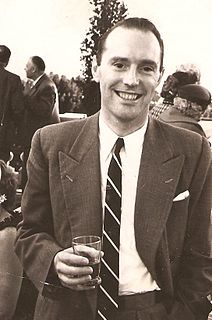
Harry Bolton Seed was an educator, scholar, former Professor at the University of California, Berkeley. He was regarded as the founding father of geotechnical earthquake engineering.
Proximity Designs is a not-for-profit social enterprise working to help reduce poverty for rural families in Myanmar (Burma). They design and market products and services that low-income farmers purchase and use to help increase their incomes. The organisation sells foot-powered irrigation pumps, water storage tanks, drip irrigation systems, solar lighting and farm advisory services. Proximity distributes its products and services through a network of private sector agro-dealers and independent village-level agents that reaches approximately 80 percent of Myanmar's rural population. The products are designed to help farmers grow higher value crops and significantly increase their annual incomes. Since starting in 2004, more than 110,000 Proximity products have been purchased by farm households in Myanmar. Following the disaster of Cyclone Nargis in 2008, the organisation became active in designing and implementing humanitarian relief and recovery efforts for entire communities. It is a 501(c)3 non-profit organisation registered in California with operations in Myanmar.
Isadore Perlman was an American nuclear chemist noted for his research of Alpha particle decay. The National Academy of Sciences called Perlman "a world leader on the systematics of alpha decay". He was also recognized for his research of nuclear structure of the heavy elements. He was also noted for his isolation of Curium, as well as for fission of tantalum, bismuth, lead, thallium and platinum. Perlman discovered uses of radioactive iodine and phosphorus for medical purposes. He played a key role in Manhattan Project's plutonium production.
Montgomery Knight was an aeronautical engineer who specialized in rotary-wing aircraft. He was the first director of the Guggenheim School of Aeronautics at the Georgia Institute of Technology and a founder of and long-time researcher at the Georgia Tech Research Institute.
Product analysis involves examining product features, costs, availability, quality and other aspects. Product analysis is conducted by potential buyers, by product managers attempting to understand competitors and by third party reviewers.
